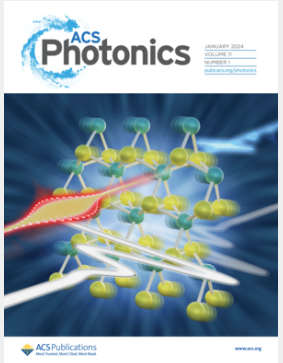Infrared Metaplasmonics
IF 6.5
1区 物理与天体物理
Q1 MATERIALS SCIENCE, MULTIDISCIPLINARY
引用次数: 0
Abstract
Plasmonic response in metals, defined as the ability to support subwavelength confinement of surface plasmon modes, is typically limited to a narrow frequency range below the metals’ plasma frequency. This places severe limitations on the operational wavelengths of plasmonic materials and devices. However, when the volume of a metal film is massively decreased, highly confined quasi-two-dimensional surface plasmon modes can be supported out to wavelengths well beyond the plasma wavelength. While this has, thus far, been achieved using ultrathin (nm-scale) metals, such films are quite difficult to realize and suffer from even higher losses than bulk plasmonic films. To extend the plasmonic response to the infrared, here we introduce the concept of metaplasmonics, representing a novel plasmonic modality with a host of appealing properties. By fabricating and characterizing a series of metaplasmonic nanoribbons, we demonstrate large confinement, high-quality factors, and large near-field enhancements across a broad wavelength range, extending well beyond the limited bandwidth of traditional plasmonic materials. We demonstrate 35× plasmon wavelength reduction, and numerical simulations suggest that further wavelength reduction, up to a factor of 150, is achievable using our approach. The demonstration of the metaplasmonics paradigm offers a promising path to fill the near- and mid-infrared technological gap for high-quality plasmonic materials and provides a new material system to study the effects of extreme plasmonic confinement for applications in nonlinear and quantum plasmonics.

求助全文
约1分钟内获得全文
求助全文
来源期刊

ACS Photonics
NANOSCIENCE & NANOTECHNOLOGY-MATERIALS SCIENCE, MULTIDISCIPLINARY
CiteScore
11.90
自引率
5.70%
发文量
438
审稿时长
2.3 months
期刊介绍:
Published as soon as accepted and summarized in monthly issues, ACS Photonics will publish Research Articles, Letters, Perspectives, and Reviews, to encompass the full scope of published research in this field.
 求助内容:
求助内容: 应助结果提醒方式:
应助结果提醒方式:


